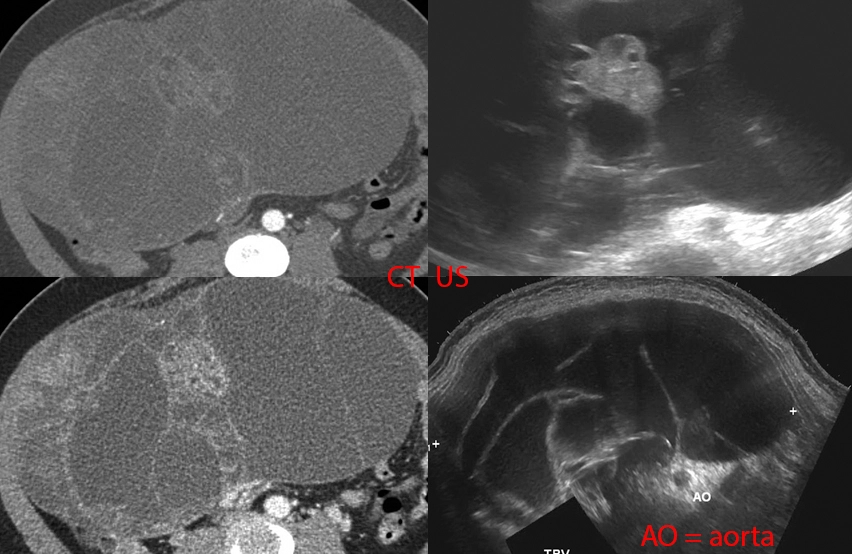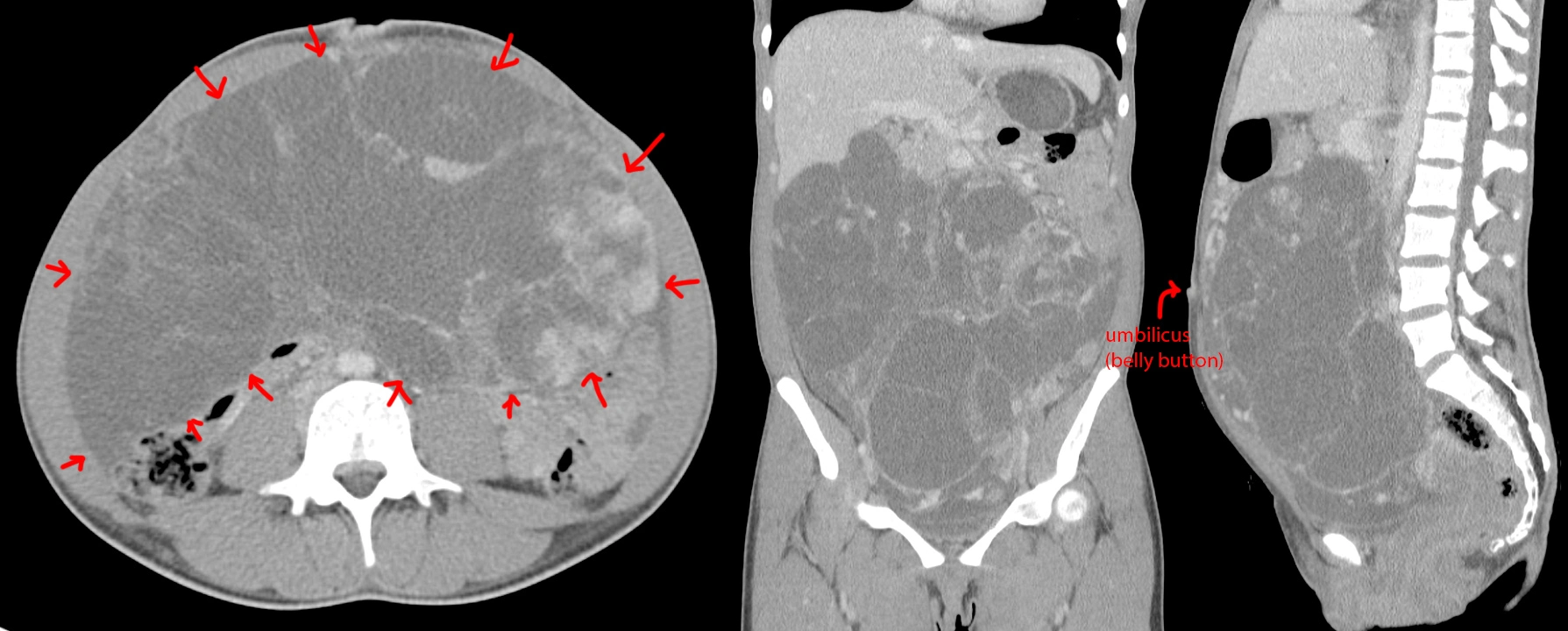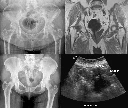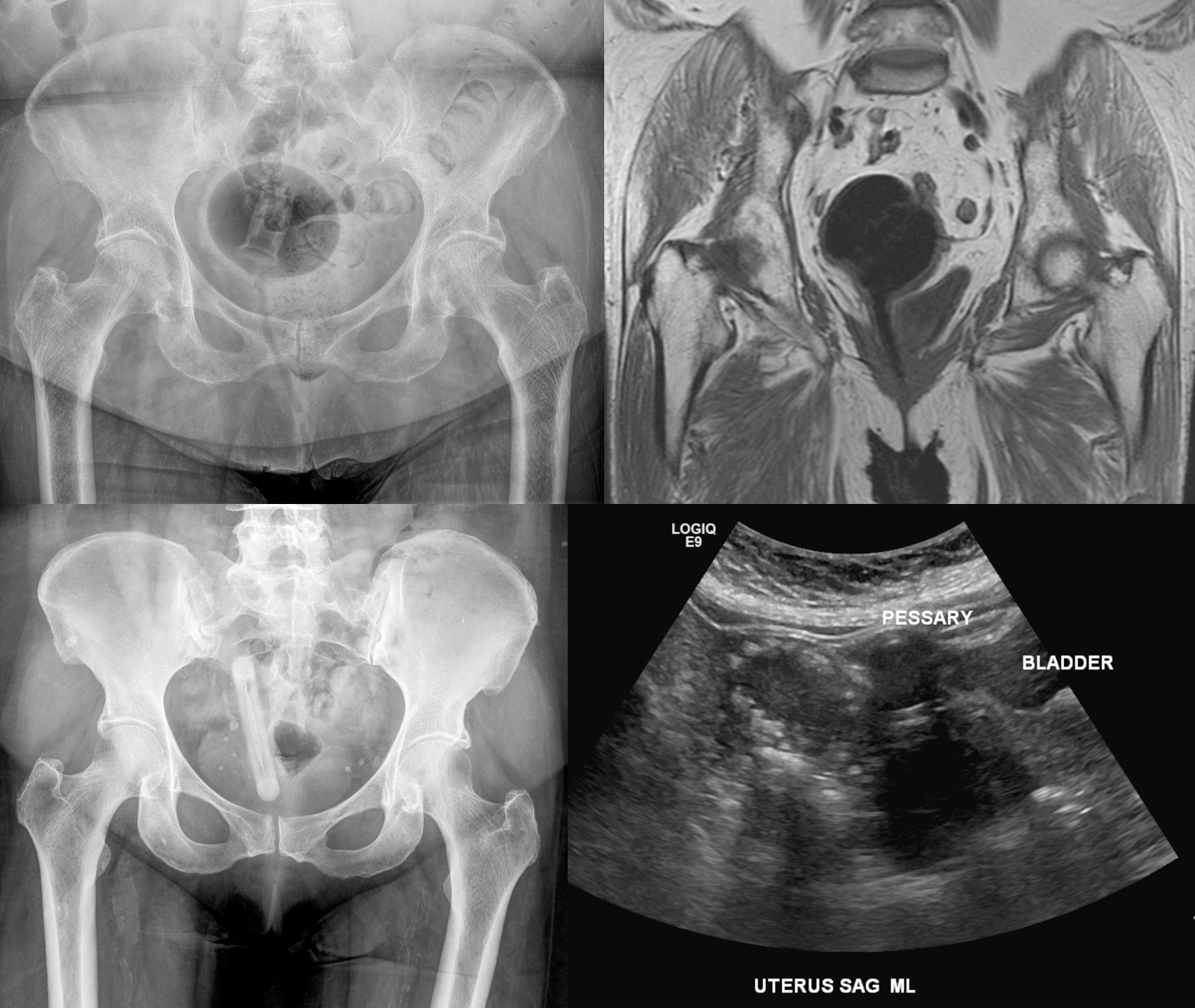Search
Ovarian mucinous cystadenocarcinoma.


33 year old female with abdominal pain, abdominal distention, nausea/vomiting, early satiety, and weight loss.
Bottom right: Ultrasound done in a panorama shows how distended the abdomen is by a large multi-cystic mass.
Top right: Non-panoramic ultrasound image shows how limited the imaging modality is in being able to cover such a large mass. This image also shows a more solid area within the mass.
Left: CT images approximately where the ultrasound was done.
The patient underwent laparotomy with removal of the ovarian, fallopian tube, and appendix. There was a large ovarian cyst that was draining serous fluid (watery), mucinous fuid (mucus-like), and blood. The final path was as titled.
Endometriosis.


36 year old female with a history of C-section. Then she started feeling a growing mass in her surgical scar.
CT shows a spiculated mass along the C-section scar that invades the right inferior rectus muscle. A differential diagnosis of desmoid tumor, endometriosis, and soft tissue sarcoma was provided.
Surgical resection of the mass was performed, which turned out to be endometriosis.
Ovarian Sertoli-Leydig cell tumor.


26 year old female with 2-3 months of abdominal enlargement and weight gain.
CT shows a -massive- multicystic mass filling the entire abdominal cavity and displacing the normal organs. The mass extends from the pelvis to above the belly button, ~25-30 cm in length.
The patient underwent exploratory laparotomy. The mass originated from the right ovary, which was resected. The omentum, regional lymph nodes, and appendix were also removed. Luckily, there was no recurrence of the tumor at last follow-up 2 years later, and she went on to have kids.
The classic internet rectal foreign body... or is it?


On the left side, 2 x-rays of 2 different patients with 2 different objects in their pelvis. Internet denizens would no doubt instantly diagnose these as accidental rectal foreign bodies from people falling on their butts. However, these are both pessaries used to treat pelvic organ prolapse. The top one is an inflatoball pessary. The bottom one is a ring-shaped pessary that we see on edge.